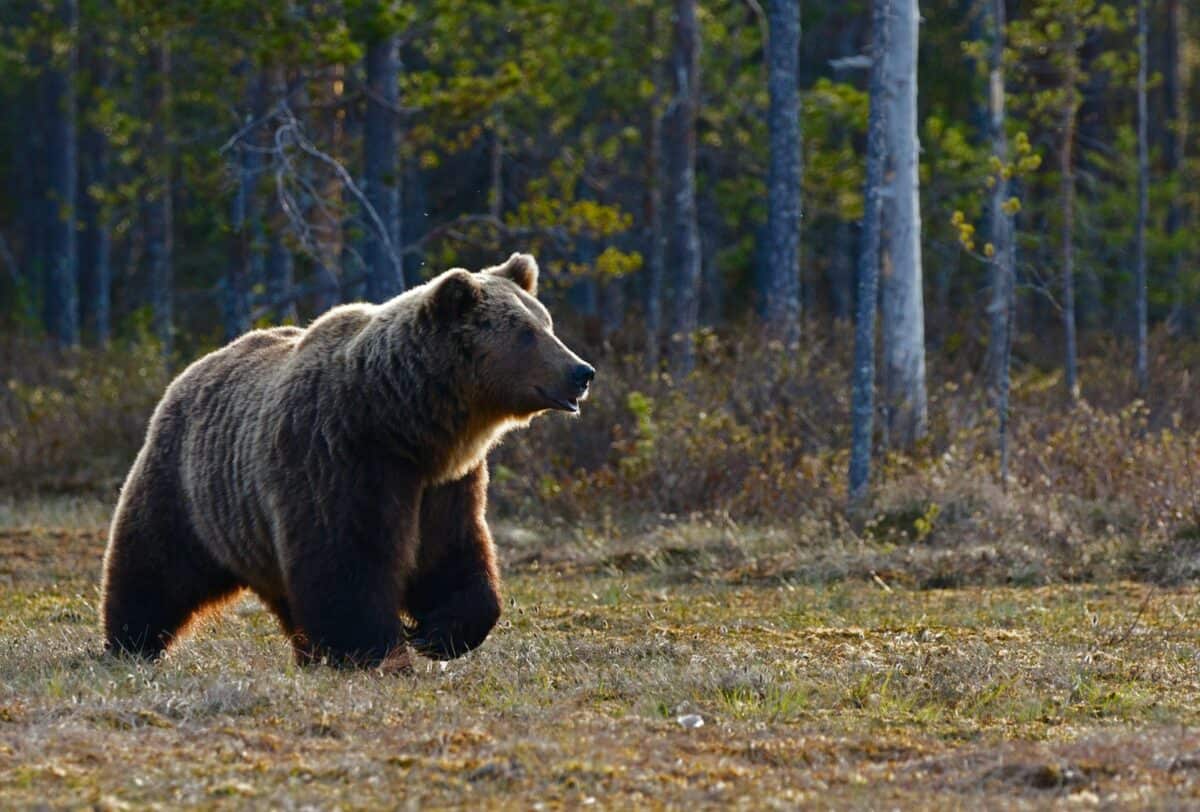The grizzly bear, scientifically known as Ursus arctos horribilis, is one of the most fascinating species in the animal kingdom, renowned for its impressive strength and adaptability. Grizzly bears are found predominantly in North America, where they roam vast territories spanning forests, alpine meadows, and tundra. These muscular giants are omnivores, with a diet ranging from berries and nuts to fish and small mammals. Understanding how grizzly bears utilize their strength is key to appreciating their survival strategies in the wild.
Physical Strength and Adaptations

Grizzly bears are equipped with incredible physical prowess. Adult males can weigh between 400 to over 600 pounds, with some individuals even reaching the 1,000-pound mark in preparation for hibernation. Their muscle mass and bone density allow them to wield tremendous power, crucial for various survival activities. One of the bear’s strongest features is its forelimbs, equipped with muscles capable of moving large objects and breaking into the fortified shelters of prey. These mighty limbs are also adept at digging and foraging, a testament to their versatility.
Dominance and Defense

In the wild, grizzly bears are known as top predators with very few natural threats. Their strength not only places them at the top of the food chain but also serves as a protective mechanism. Grizzly bears are solitary animals, and their imposing presence deters potential threats and competitors. When faced with danger, such as an encounter with a rival or a predator like the elusive wolf pack, grizzlies can unleash their power to defend themselves fiercely. Their strategic use of strength is a primary reason for their survival and a trait passed down through generations.
Foraging and Hunting

Grizzly bears are opportunistic feeders, and their strength aids significantly in their diverse foraging techniques. They rely heavily on their muscle and mass to dig up roots, extract edible bulbs, and access high-energy pine nuts by breaking open cones. During salmon spawning seasons, grizzlies hunt by using their keen eyesight and swift movements to catch fish in fast-flowing streams. Their powerful jaws can crush the shells of mollusks and other aquatic animals, providing essential protein and fat reserves for hibernation.
Hibernation A Time for Conservation

One of the most critical periods for grizzlies is hibernation, a time when they must rely on the fat reserves accumulated through their strength-dependent activities. Grizzlies consume vast amounts of food in the months leading up to winter; this process, known as hyperphagia, allows them to build up a thick layer of fat. During hibernation, their metabolic rate drops significantly, but the fat must sustain them for several months without food. The energy stored is directly linked to the bear’s prior ability to exploit its strength for successful foraging and hunting.
Human Interactions and Conservation

Despite their formidable nature, grizzly bears face numerous challenges from human activity. Habitat encroachment and the potential for human-bear conflicts can lead to threats for both bears and humans. Conservation efforts are essential to ensure grizzly bears can continue to use their strength and adaptability to thrive. Programs focusing on habitat protection, public education, and coexistence strategies are vital for preserving these magnificent creatures and maintaining ecological balance.
Conclusion

The grizzly bear’s strength serves as a fundamental tool for its survival in the wild. Whether it is in securing food, defending territory, or preparing for hibernation, their powerful physique plays a central role in every aspect of their life. By understanding and respecting the strength of the grizzly bear, we can foster better conservation efforts that support both their continued presence in natural habitats and our harmony with these amazing animals.
- 14 Creatures That Can Freeze and Thaw Back to Life - August 9, 2025
- 10 Animals That Risked Their Lives to Save Humans - August 9, 2025
- 14 Reasons Why Bears Are Afraid of Humans (Most of the Time) - August 9, 2025

